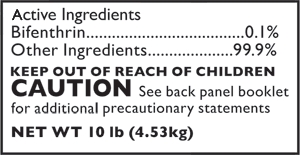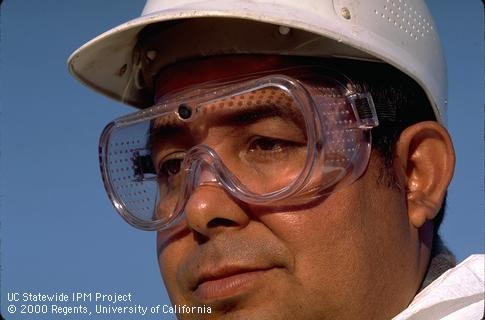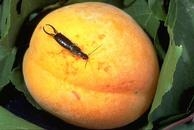By Brent McGhie, UC Master Gardener of Butte County, May 31, 2019
The University of California recommends the use of Integrated Pest Management (IPM) to control garden pests. The goal of IPM is to use the least harmful control method(s) that will be effective in managing a particular pest. Depending on the pest, these methods include one or more of the following: cultural controls, biological controls, mechanical and physical controls and chemical controls (pesticides). When using IPM, it is recommended that gardeners resort to the use of pesticides only as a last resort, after other control methods have been tried and found wanting.
Sample ingredient label, ANR
Once the decision to use a pesticide has been made, the next step is to choose the right pesticide. The University of California Pest Notes series is a good source of information for identifying the least toxic pesticides appropriate for a specific pest. Low toxicity pesticides include insecticidal oils and soaps as well as the microbial insecticide, Bacillus thuringiensis, which is effective against many caterpillars, but nontoxic to other animal life. Pest Notes are available from your local UC Master Gardener program (based at the UC Cooperative Extension Office) and online at the UC Statewide IPM Program website.
Protective goggles used to protect eyes during mixing and applying pesticides, ANR
Whenever a pesticide is used, all instructions should be read and carefully followed. Especially critical are instructions concerning proper application and safety precautions (for example, the use of protective clothing and eyewear).
To minimize pesticide contamination of the environment, mix only what is needed for immediate use and never use more than what the directions recommend. To further limit environmental exposure, avoid widespread applications; instead, apply only to affected areas. Do not spray during windy conditions when pesticides can be blown away from their intended target. To prevent contamination of waterways, avoid spraying near storm drains, creeks, or other bodies of water. It's important that the application dry on the target before it gets wetted by rain or irrigation. Unless otherwise specified, do not spray just before irrigating, or before rainy weather. Additionally, be aware that spraying pesticides on hard surfaces such as foundations, driveways or sidewalks increases the likelihood that they will be washed off into storm drains.
The only legal way to dispose of pesticides is to take them to a local hazardous waste disposal facility. Do not pour unused or excess material down the drain, onto the soil, into waterways, into gutters, or into the trash. However, in California it is legal for homeowners to dispose of empty pesticide containers in the trash. Before disposing, containers should be triple rinsed and the rinse water used as part of the last application. To find the location of the closest hazardous waste disposal site, call the California Environmental Hotline (1-800-253-2687), or visit the “Earth911” website.
Information in this article is based on “Pesticides: Safe and Effective Use in the Home and Landscape” from the UC IPM website (Pest Note #74126).
For more information on gardening in our area, visit the UC Master Gardener of Butte County webpage at: http://ucanr.edu/sites/bcmg/. If you have a gardening question or problem, call our Hotline at (530) 538-7201 or email mgbutte@ucanr.edu.


